The NVIDIA GeForce GTX 750 Ti and GTX 750 Review: Maxwell Makes Its Move
by Ryan Smith & Ganesh T S on February 18, 2014 9:00 AM ESTOverclocking: When Headroom Exceeds Clockspeed Limits
Last but not least we have our customary look at overclocking performance. With all 3 of our cards being based on the same reference design, we expect to see some relatively consistent results between the cards. At the same time NVIDIA has told us that GTX 750 has some very interesting overclocking properties, and boy they weren’t kidding.
On a quick note, as a GPU Boost 2.0 product, overclocking on the GTX 750 series is not any different than on other GTX 700 series cards. It’s still based on offset overclocking, with the user adjusting offsets for the final overclock. But with that said there are two things to point out. The first is that the power target is limited to 100% on all cards. Because these are sub-75W cards, NVIDIA is not allowing anyone to exceed the card’s default TDP, so you only have as much power to play with as you started with. Second of all, none of our cards had available overvoltage bins. Apparently some cards do, but ours did not, so our voltage bins maxed out at the default bins you see listed.
Finally, all 3 cards have a maximum clock offset of 135MHz. This will be an important fact in a little bit.
| GeForce GTX 750 Series Overclocking | |||||
| GTX 750 Ti (Ref) | Zotac GTX 750 Ti | Zotac GTX 750 | |||
| Shipping Core Clock | 1020MHz | 1033MHz | 1033MHz | ||
| Shipping Max Boost Clock | 1150MHz | 1175MHz | 1163MHz | ||
| Shipping Memory Clock | 5.4GHz | 5.4GHz | 5.0GHz | ||
| Shipping Max Boost Voltage | 1.168v | 1.137v | 1.187v | ||
| Overclock Core Clock | 1155MHz | 1168MHz | 1168MHz | ||
| Overclock Max Boost Clock | 1285MHz | 1310MHz | 1298MHz | ||
| Overclock Memory Clock | 6.3GHz | 6.1GHz | 6.0GHz | ||
| Overclock Max Boost Voltage | 1.168v | 1.137v | 1.187v | ||
As we can quickly see, two patterns emerge. The first is that with every card equipped with 6GHz memory (though we remain unsure which mode the Zotac GTX 750’s is in), each and every card hits at least 6GHz, and sometimes a bit more. With the 128-bit memory bus generally providing the biggest bottleneck for GM107, the fact that there is 12%+ overclocking headroom here is going to be very helpful in feeding the tiny beast that is GM107.
More significantly however is the core overclock. We maxed out every single one. Every card, from the NVIDIA reference card to the Zotac cards, had no trouble overclocking by the full 135MHz to their respective maximum overclocks. The Zotac GTX 750 Ti, having the highest maximum boost clock by default, is technically the winner here at 1310MHz. But at this point everyone is a winner. Going by the maximum boost clock, every card is capable of an 11% core overclock, to go with that tasty 12% memory overclock.
The fact of the matter is that this is not something we normally encounter. Sub-75W cards are not poor overclockers, but they’re not usually strong overclockers either, which is why a 135MHz offset limit makes sense at first glance. But it’s clear that NVIDIA underestimated their own overclocking potential here when setting the specifications for these cards, as there’s seeming some headroom left untapped. Without additional offset room it’s impossible to say just how much more overclocking headroom remains – it may not be very much – but there should be room for at least some additional overclocking.
At this point with cards already in the pipeline we’ll have to take a look at individual cards and see what manufacturers have set their offset limits at. If they have followed NVIDIA’s specifications, then they’ll be equally limited. But hopefully with the launch now behind them, NVIDIA’s partners can work with NVIDIA on making greater offsets available on newer batches of cards.
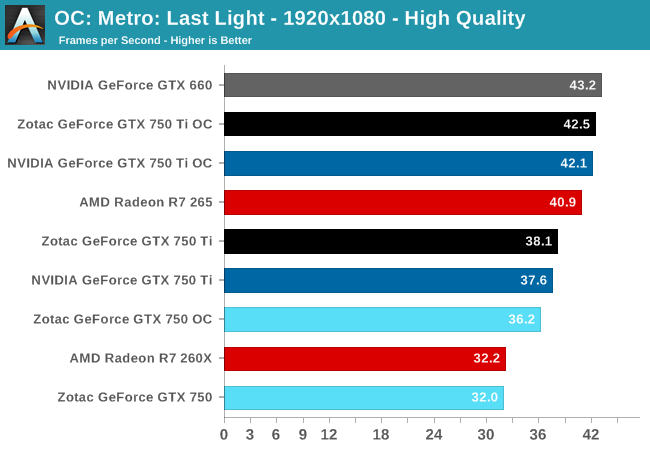
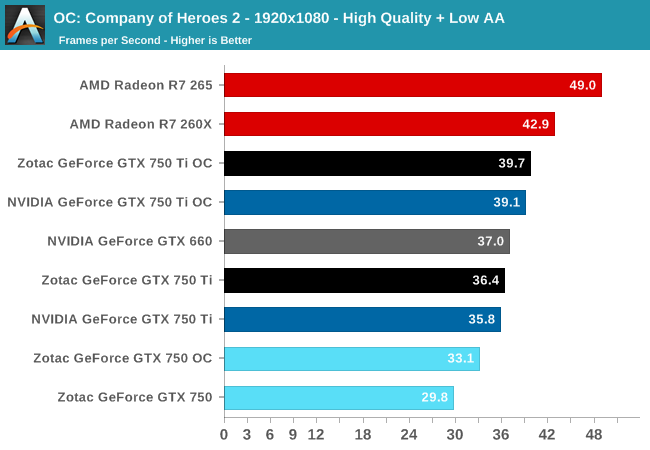
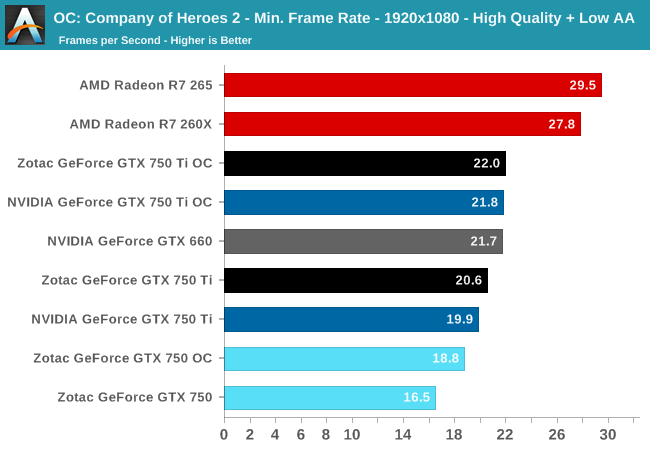

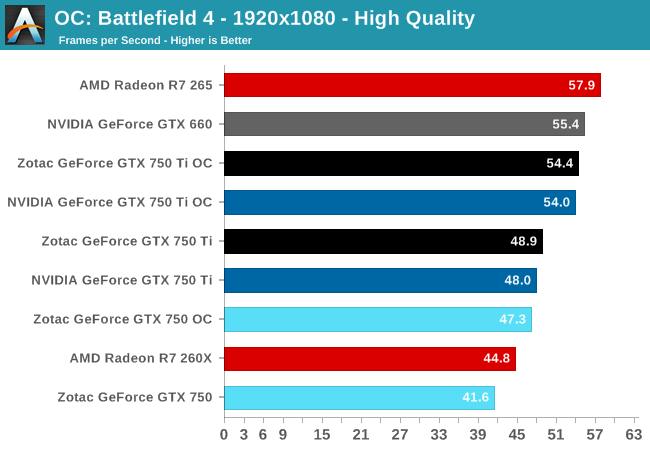
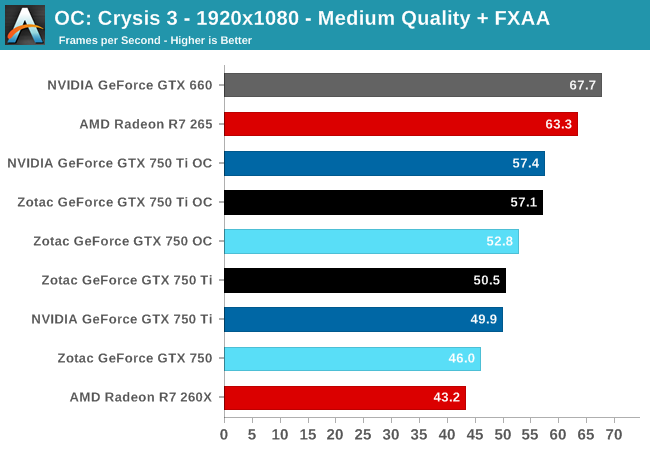
Depending on the game being used, the benefits from overclocking range from 9% to 12%, roughly in-line with our overclocks. For the GTX 750 this is sometimes enough to catch the stock clocked R7 260X, but even with this overclock the GTX 750 Ti will still generally trail the R7 265.
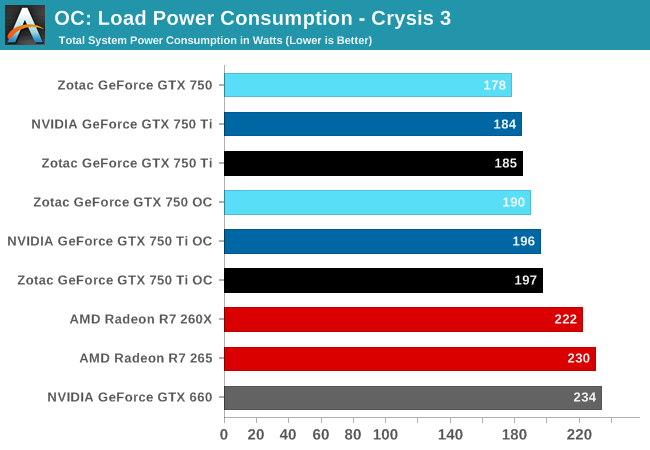

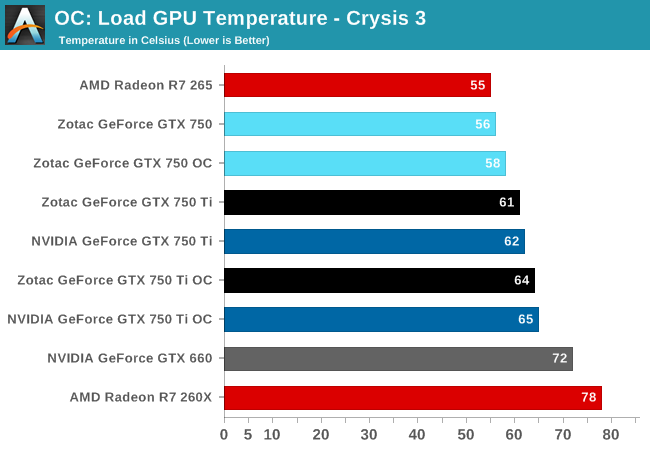
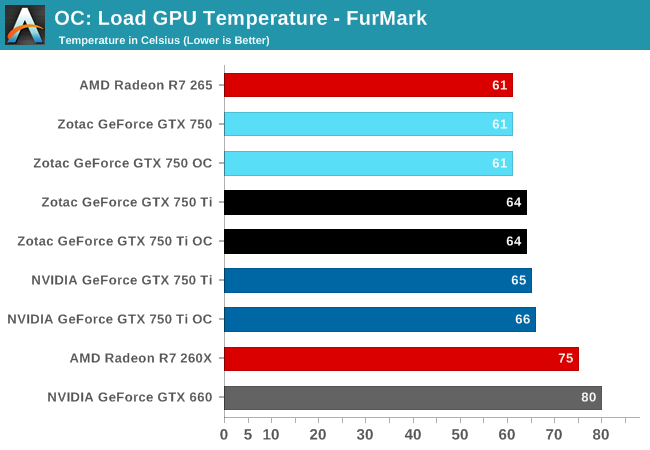
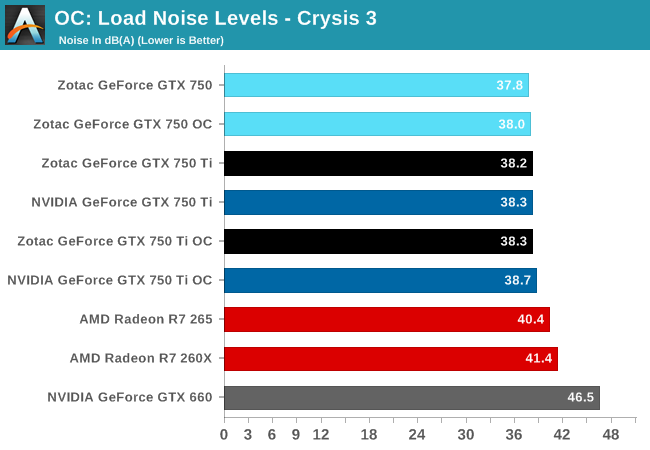
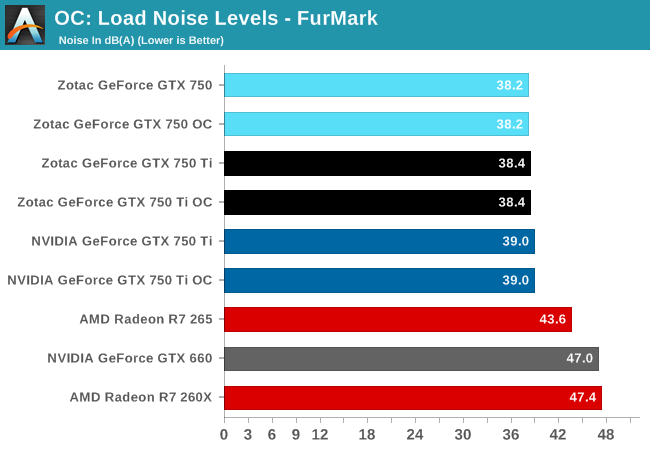
On the other hand, because of the hard TDP limit of 100%, this extra performance is relatively cheap. Video card power consumption moves by only a few watts, and then a few watts of CPU time on top of that. For all practical purposes overclocking can extend NVIDIA’s already incredible performance-per-watt ratio by another 10% with no meaningful impact on noise. Given the consistency of overclocking headroom we’ve seen in our GTX 750 series samples, this is one of those scenarios where overclocking is going to be a reasonable and (relatively) fool proof action to take.










177 Comments
View All Comments
Mondozai - Wednesday, February 19, 2014 - link
Wait for 800 series budget cards if you have the patience. Hopefully no more than 4-5 months if TSMC does very well on 20.Jeffrey Bosboom - Wednesday, February 19, 2014 - link
I understand the absolute hashrate on these cards will be low, but I'm interested to know how the focus on power consumption improves mining performance per watt. (Though I can't imagine this lowish-end cards would be used, even if efficient, due to the fixed cost of motherboards to put them in.)Antronman - Wednesday, February 19, 2014 - link
Nvidia's best cards have tiny hash rates compared to 95% of every AMD GPU ever released.JarredWalton - Wednesday, February 19, 2014 - link
Apparently you're not up to speed on the latest developments. GTX 780 Ti as an example is now hitting about 700 KHash in scrypt, and word is the GTX 750 will be pretty competitive with 250-260 KHash at stock and much lower power consumption. Some people have actually put real effort into optimizing CUDAminer now, so while AMD still has an advantage, it's not nearly as large as it used to be. You could even make the argument that based on perf/watt in mining, some of NVIDIA's cards might even match AMD's top GPUs.darthrevan13 - Wednesday, February 19, 2014 - link
Why did they chose to retire 650 Ti Boost and replace it with 750Ti? 650 Ti B is a much better card for high end games because of the memory interface. They should have marketed 750Ti as 750 and 750 as 740.And why on earth did they not include full support for HEVEC and DX11.2? You're limiting the industry's adoption for years to come because of you're move. I hope they will fix this in the next generation 800 cards or when they will transition to 20nm.
Ryan Smith - Thursday, February 20, 2014 - link
Not speaking for NV here, but keep in mind that 650 Ti Boost is a cut-down GK106 chip. All things considered, 750 Ti will be significantly cheaper to produce for similar performance.NVIDIA really only needed it to counter Bonaire, and now that they have GM107 that's no longer the case.
FXi - Wednesday, February 19, 2014 - link
No DX 11.2 or even 11.1 support? For THAT price??Pass...
rish95 - Wednesday, February 19, 2014 - link
According to GeForce.com it supports 11.2. Not sure what's up with this:http://www.geforce.com/hardware/desktop-gpus/gefor...
willis936 - Wednesday, February 19, 2014 - link
You don't need to be compliant to support something. Compliance means you meet all required criteria. Support means you can run it without having necessarily all the bells and whistles. If console hardware has DX compliance then the devs will take advantage of that and when they're ported you'll lose some of the neat graphics tricks. They might still be able to be done in software, you'll just need a bigger GPU to get the same frame rates :p Some things might not be able to be done in software though. Idk enough about DX to say.sourav - Wednesday, February 19, 2014 - link
does it will support on a pci v2?